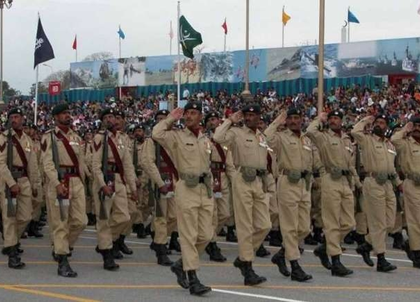Artillery deficit, warfighting capacity of 90 hours and economy in doldrums: Why Pakistan will bite the dust
By IANS | Updated: May 4, 2025 19:17 IST2025-05-04T19:14:32+5:302025-05-04T19:17:27+5:30
New Delhi, May 4 As the tensions between India and Pakistan simmer and head towards a crescendo post ...

Artillery deficit, warfighting capacity of 90 hours and economy in doldrums: Why Pakistan will bite the dust
New Delhi, May 4 As the tensions between India and Pakistan simmer and head towards a crescendo post the Pahalgam massacre on April 22, there are wide apprehensions of an all-out war breaking out in the sub-continent. Pakistan has already started getting panic attacks and is now resorting to hollow threats, empty blusters and rhetoric about its nuclear arsenal.
A couple of Pakistan’s top ministers have already expressed fears of ‘imminent’ military action from India and are reportedly knocking the doors of US, seeking help on ‘cooling down’ the heightened state of stand-off with India.
The reason behind growing anxiety and consternation in Islamabad is the depleting reserves of its military’s artillery and ammunition and also a ruined economy, not competent enough to sustain the full-scale military conflict for more than 90 hours.
The shortage in artillery ammunition of Pakistan is apparently because of its recent arms deals with Ukraine, which have drained its war reserves, said a report.
Also, Pakistan Ordnance Factories (POF), which supplies arsenal to military is struggling to replenish supplies amid surging demand and outdated production facilities.
A couple of Pakistan’s political and military leaders have stated that Islamabad will give a befitting reply if India attempts any ‘misadventure’ or scales up aggression at the border, however this rhetoric is far from reality.
Many reports suggest that Pakistan's ammunition reserves have reduced to a level, where it can’t sustain more than 96 hours of high-intensity conflict with India, thus making its military vulnerable.
As it sold 155 MM ammunition to Ukraine, all 155 mm gun systems, including their self-propelled and MGS artillery, are without adequate stocks of ammunition, a report said.
The shortage of artillery ammunition has put the Pakistan's military doctrine on backfoot. Without sufficient ammunition, the Pakistan army's ability to blunt an Indian offensive stands severely compromised.
In terms of armed forces strength and military arsenal as well as defence budget spending, Pakistan stands nowhere against India and this gives a fair idea about why it would face annihilation, if two nations engage in military face-off.
Where do Indian and Pakistani military, arsenal stand up?
According to the findings by Global Firepower, the current strength of India’s military personnel stands at 51,37,550 (51 lakh), out of which 14 lakh are active. Pakistan has approximately 17,04,000 (17 lakh) military personnel, out of which 6.5 lakh are active. According to Military Watch Magazine, India has 4,241,500 combat personnel, while Pakistan has 964,000 combat personnel.
India has 2,229 aircraft, out of which 513 are fighter planes and 130 are attack aircraft while Pakistan Air Force has 1,399 aircraft, out of which 328 are fighter planes and 90 are attack aircraft.
According to Global Firepower, Indian Navy has two aircraft carriers, 13 destroyers, 14 frigates, 18 Corvettes, 135 patrol vessels, and 18 submarines while Pakistan has 121 assets, including nine frigates, 69 Patrol vessels, nine Corvettes, eight submarines, and three mine warfare vessels.
Also, India has diversified its defence exports from US as well as Europe, reducing its over-reliance on Russia, in a bid to modernize its systems with weapons from top defence firms, while Pakistan has been buying the bulk of its arms from China.
India emerging as global leader, Pakistan falling into abyss
In 2000, India’s GDP stood at $468 billion, contributing 1.37 per cent to global GDP. Pakistan, on the other hand, had a GDP of $99 billion in 2000 and its share in global GDP was 0.29 per cent in 2000. In the past decade, India’s share of global GDP has risen from 2.55 per cent to 3.54 per cent while Pakistani GDP’s contribution in the global level remained unchanged at 0.34 per cent.
Lately, Pakistan has been battling a severe economic crisis with prices of basic amenities spiraling to abnormal levels and instances of chaos among the public becoming a norm.
The country's mounting debt and inflation, and dwindling foreign exchange reserves also has a fall-out on its military's operational capabilities. Of late, the Pakistani Army has reportedly been forced to suspend its military exercises to cut down on expenses.
Such grim scenarios speak a lot about Pakistan’s internal problems and challenges. The rogue nation makes tall claims about its nuclear arsenal as well as economic state but has very little ground to substantiate it. In the case of any military conflict, it is bound to wilt sooner than later and eventually bite the dust.
Disclaimer: This post has been auto-published from an agency feed without any modifications to the text and has not been reviewed by an editor
Open in app